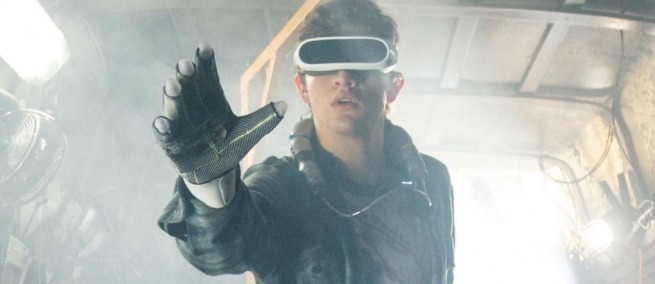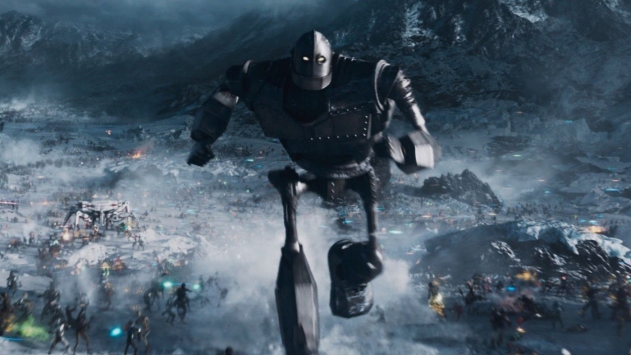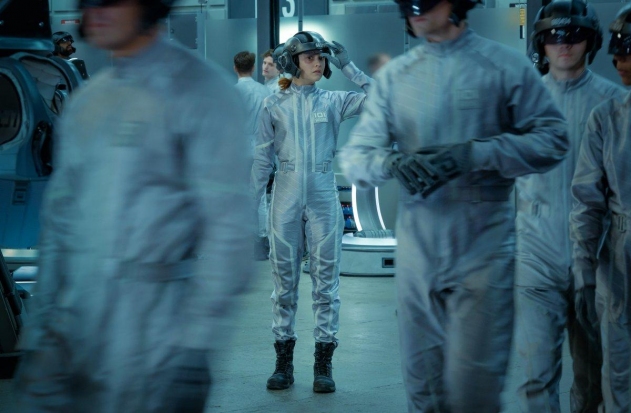
[Editor’s Note: This article is part of “Peer Review,” Science & Film’s commissioning project where scientists are asked to write about topics in current film. Dr. Duncan Buell, Professor of Computer Science and Engineering at the University of South Carolina, writes about Steven Spielberg’s READY PLAYER ONE. Adapted from a book of the same name by Ernest Cline, the film stars Tye Sheriden and Olivia Cooke.]
I will start with two disclaimers. READY PLAYER ONE is a film about gamers, and I am not a gamer. This may put me at something of a disadvantage, perhaps, when writing about gaming culture. I also have not read the book, so I comment only on the film.
I am, however, a computer scientist, and a computer science professor with a lot of students who are gamers. And I have been an avid consumer of science fiction all my life, starting with my father's extensive collection back when I was in elementary school.
I saw READY PLAYER ONE before reading any reviews. For good or ill, I did not want my impression to be skewed beforehand. I have read a couple of reviews after seeing the film. About all I have learned from reading the reviews is that the film, which is certainly derivative in many ways, was intended to be derivative. The film is a nonstop allusion to pop culture icons and memes.
So, what did I see, what did I think I saw, and what do I think?
First off, the film is an amazing tribute to the power of modern computer graphics and image generation. The imagery and the visual effects are just awesome. I consider the original WHEN THE EARTH STOOD STILL one of the great films of all time; I grew up watching all the science fiction B movies of the 1950s (my all-time favorite is FIEND WITHOUT A FACE); I saw FINAL FANTASY when a friend said "go see it and look closely at the hair". It's one thing to do special effects at high speed in an action sequence (as in the TRANSFORMERS movies), or when everything is done in special effects (AVATAR). I think it's quite another to do extensive superimposition of the unreal on the real and to have it be so seamless, as in READY PLAYER ONE. There were in fact some action sequences in which it seemed that the imagery was intentionally scaled back to make it feel like a video game. But there were certainly interpersonal scenes in which it felt real.

The plot?
Underequipped, ragtag, ad hoc assembled, proponents of "Truth, Justice, and the American Way" (see references above and below to popular culture), and spokesgamers for the little guys going up against The Big Corporation that seeks only to monetize, monopolize, and control, and that has a semi-infinite supply of serfs to do its bidding. This was The Quest. I could feel the allusions to Tolkien.
The film does not always take itself seriously. There are frequent points where it steps out of character and makes fun of itself. The muscleperson character [read that word carefully] is sometimes The Hulk and sometimes Shrek.
Back to answering the question. The plot. Yes, it all ends well. This is Spielberg, this is ET. There is a "moral" at the end, to the effect that it cannot be the case that all people spend all their time gaming. I point this out to my incoming students. Nearly all of the incoming male computer science students want to work in games. I point out to them that there is a limit to the video game industry: When entertainment becomes 100% of the Gross Domestic Product of the United States then some things, like food production, will have to be squeezed out.

The film never covers this practical point. Yes, large numbers of people in the film spend their entire lives inside the game because their lives are otherwise so miserable. How are they fed? In the interest of "getting" the message of the film, or simply watching a movie, I suspended my disbelief about this item.
What about the science in this science fiction? Well, I certainly can't say that it's totally wrong. The gap between the kind of gaming in the film and the kind of gaming that is possible now isn't that large, and the film grants more than 25 years of development time between now and then in a discipline that is reinventing itself at least once every ten years. So I don't consider the technology in the film to be "fiction" for 2045; there's nothing there that would require magic in the Arthur Clarke definition of magic. The suspension of disbelief necessary for the gaming and the hacking of the game is about the essence, not the existence. For example, the film suggests that an elaborate hack could be produced in a few minutes from a cold start. It’s an action film at that point, so the hack has to be done quickly. I don’t doubt that a hack would be possible, but I doubt it would be done that quickly.
As mentioned above, the film is a nonstop reference to popular culture of the recent past. I saw the film with only two other people in the theater, one of whom is an older student in my program. His later comment was that the film was intended to be the stringing together of pop-culture icons and memes for guys in their 30s. That fit his demographic, so he was happy with it.

There has been much discussion nationally about violence in video games and about the adolescent males dominating that culture. None of that discussion is present in READY PLAYER ONE; indeed, in contrast to the debate about male dominance, it is assumed in the film that literally everyone wants to spend all their time hiding from reality in a first-person shooter video game with lots of blood spatter. This isn’t a film about the ethics of gaming, or the ethics of the culture of gaming, or about the place of gaming in society. It’s an action film of The Quest that happens to take place inside a video game. The little nod to gaming and social issues at the very end of the film is only a short bit removed from being puerile and is almost a throwaway; we knew something like that was coming and that it would be stated explicitly.
TOPICS